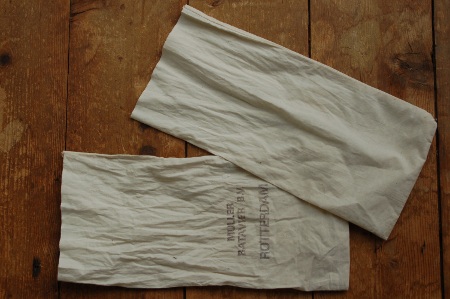While browsing Anne’s blog, I came across this great video of Jamie Oliver. I guess by now he’s someone pretty well known on both sides of the Atlantic. While I like Jamie a lot, there are clearly some points I disagree with him on, so I’m going to say something about these too.
To be honest, I have a problem with his strong imagery regarding sugar.
When it comes to processed foods containing sugar, and children especially consuming large quantities of this, there’s little to disagree with. Children don’t need sugar added to their milk to make it taste better, nor do they need artificial flavors and colors. In addition, there’s reason to be concerned about salt and fats in processed foods. While I say concerned, I want to be clear that moderation is key here, and those that have the most to worry about are people that eat only processed foods and little else.
There’s also little doubt that the healthiest food for anyone to eat is fresh, home cooked, locally produced and free of chemicals and pesticides. The healthiest diet is also one that emphasises fruits, vegetables and simple starches over animal products and other processed foods. This is particularly important for children.
On the other hand, sugar, salt and fats/oils are also perfectly normal cooking ingredients, that nearly all of us have in our kitchens. These are perfectly fine to use in cooking or to season your food. It’s absolutely crazy that some people think it’s unhealthy for the average person to add a spoonful of sugar to their tea or salt to their meal. If you’re diabetic, have high blood pressure or otherwise under doctors care, there may be some specific reason why you personally cannot eat certain things, but there’s no evidence to suggest it’s in any way unhealthy for the average person.
Many of us also eat modest amounts of processed foods containing these ingredients, like dairy, soft drinks, meats, and even things like soy sauce, catsup and so on. There’s little evidence to suggest there’s anything wrong with this. In fact there’s evidence to suggest that not only are these normal things to consume, they can also be healthy. There can however be many reasons for concern regarding how these foods are produced, and in general it’s becoming increasingly clear how important it is to think about this.
Food companies make huge profits by making people afraid of normal foods, and selling them supposedly healthy alternatives or by substituting something cheaper for these common ingredients.
Sugar is one of the most clear examples. In relative terms, sugar is expensive to add to processed foods. It’s price fluctuates on world markets, and supplies are not reliable. Soft drink companies have long sought alternatives to common sugars for their products. By using a sugar substitute, for example aspartame that’s commonly used in sugar free soft drinks, manufactures save an estimated 1.5 cents (US dollars) per can of beverage. This is a huge savings when considering how many cans of sugar free drinks are made each year. A similar savings can be had by using high fructose corn syrup (HFCS) instead of normal sugar, which is common in the US.
The problem is these sugar alternatives are linked to obesity, diabetes and other health problems. Statistically, people who drink soft drinks containing aspartame instead of sugar are heavier. In addition, the current obesity epidemic in the US corresponds almost exactly to the introduction of HFCS into processed foods and soft drinks.
There’s little evidence to show a connection between consuming modest amounts of ordinary sugar and weight gain. In fact, sugar is known to suppress appetite and many people who switch to sugar alternatives find themselves coping with a significant increase in hunger. Aspartame is a known appetite stimulant.
In simple terms, there’s little evidence to suggest an average adult without specific medical concerns is doing anything unhealthy by consuming modest amounts of fats, sugar or salt, as long as these come from natural sources. Specifically, there is no benefit in looking for alternatives to these foods. Certainly, no one should be afraid of these ingredients for use in home cooking.



